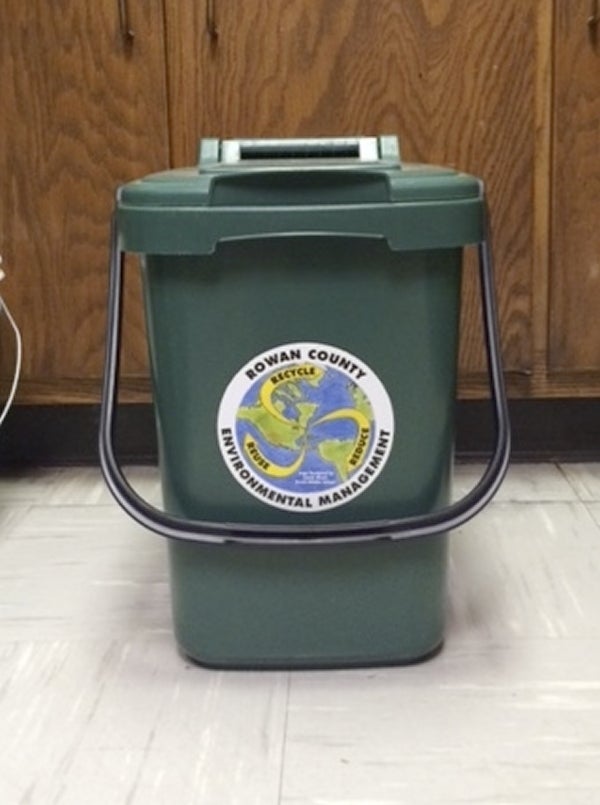Amy-Lynn Albertson: Make your compost happen
Published 12:00 am Friday, March 25, 2016

- Cooperative Extension A bin this size is for food scraps that can go on the compost pile.
Rowan County’s heavy clay soils hold water much longer than sandy soils common in eastern North Carolina. One of the easiest and cheapest ways to improve this situation is add compost to your soil.
Everyone has a compost pile just waiting to get started. Making compost is a fast way of imitating nature’s cycle of life and death. The result of the composting process is a dark, loose, partially decomposed, shapeless form of organic matter that reveals no hint of its origin. The only difference between finished compost and forest humus created by nature is time.
The actions of various microorganisms and invertebrates convert raw organic matter in a compost pile into finished compost. Organisms exposed to the appropriate balance of oxygen, moisture and nutrients can achieve maximum decomposition. Products of the composting process include finished compost, carbon dioxide, heat and water.
Fallen leaves and grass clippings are sources of nitrogen and carbon for the compost pile. Straw and non-woody plant trimmings are also good for compost. Branches and twigs bigger than a quarter inch in diameter should be shredded or chipped before being placed in the compost pile.
Kitchen wastes like vegetable scraps, coffee grounds and eggshells may also be added. Sawdust can be added in moderate amounts if additional nitrogen is applied. Approximately one pound of actual nitrogen is required per 100 pounds of dry sawdust.
Wood ashes should only be added in small amounts (no more than 1 cup per bushel or 10 pounds per ton of compost). Excess wood ash will cause a loss of nitrogen from the pile. Wood ash contributes high levels of potassium to the compost pile.
Crushed clam or oyster shells, eggshells and bone meal will reduce the acidity of a compost pile. Black and white newspaper print can be added to the compost pile. However, newspaper is low in nitrogen and slow to decompose. Newspaper should only take up 10 percent of the total weight of the compost pile. Never put human or pet waste in a compost pile. In addition, you should also avoid putting in meat, bones, grease, whole eggs and dairy products.
It is important to have aeration, moisture and small particle sizes to get the most from your compost pile. Turning your pile regularly will speed up the composting process and help the pile reach higher temperatures that will kill weed seeds and plant diseases.
Moisture is vital for microbial activity. The pile should be moist but not soggy. The pile has the right amount of water when you can squeeze a few drops of water from a handful of compost. No water means the pile is too dry, if water gushes out, the pile too wet.
The smaller the particle size in the compost pile, the more quickly it will decompose. An easy way to reduce the size of the leaves in your pile is to mow the lawn before raking leaves, or run the mower over the leaf pile. Inspect your raked piles for sticks and rocks that might damage the mower before you actually mow. A bagging mower works best for this situation.
A variety of materials can be used to build compost bins or structures. A plastic garbage bag is the simplest structure to use for composting. Large plastic bags (30-40 gallon) should be filled with alternating layers of plant waste, fertilizer and lime. Add one tablespoon of fertilizer to each bag. Because bag fertilizer is a closed system it is anaerobic (no oxygen), which makes the compost more acidic. One cup of lime per bag helps to reduce the acidity.
After the bags are filled, a quart of water should be added, then close the bag tightly. Set the bags aside for six months to a year. No turning or additional water is needed for this compost system. The composting process in this system is slow because there is limited oxygen.
The Rowan County Master Gardeners have started work on compost bins here at Extension Center. Look for a workshop coming up later this spring.




